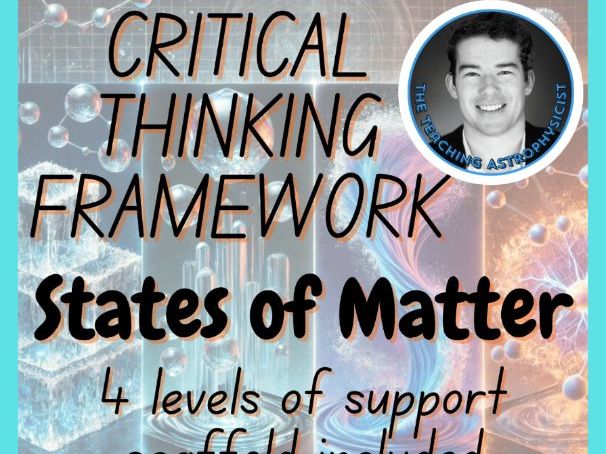

Learning about states of matter equips students with a foundation to understand a wide range of phenomena, from everyday experiences like water boiling on a stove to more advanced topics such as phase diagrams and thermal energy transfer. By examining how substances transition between solids, liquids, and gases, learners gain insight into the behavior of particles under different temperatures and pressures. This states of matter knowledge underpins many concepts in chemistry, physics, and environmental science, guiding explorations of climate patterns, industrial processes, and innovative technologies. Through these connections, students develop the critical thinking skills needed to explain real-world observations and to engage in more complex scientific investigations. After all, we can not and should not leave all the thinking to the chatbots! With this in mind, let’s engage with this excellent learning and teaching resource.
A critical thinking framework focused on the states of matter brings this complex phenomena into clear, student-friendly steps. By guiding learners to identify questions, evaluate evidence, and compare multiple explanations, it transforms the study of the phenomenon of the states of matter into an engaging, inquiry-based experience. Students gain a deeper appreciation for science as they piece together how the states of matter is relevant in the real world. Rather than just memorizing facts, they actively practice scientific habits of mind - analyzing data, identifying gaps in knowledge, and reflecting on the learning process.
A dedicated framework also saves time and supports more robust learning outcomes. It provides a structured path for teachers to implement discussions, projects, or small-group investigations without having to create all the resources from scratch. Embedded prompts and example strategies help students build confidence in their ability to think like scientists, meaning you can focus on facilitating exploration rather than constantly reinventing lesson plans. Ultimately, investing in this streamlined approach helps elevate student engagement, fosters critical thinking skills, and brings the world of the periodic table in real life to students in the classroom.
THIS STATES OF MATTER CRITICAL THINKING FRAMEWORK CAN BE USED SO MANY WAYS:
Something went wrong, please try again later.
This resource hasn't been reviewed yet
To ensure quality for our reviews, only customers who have purchased this resource can review it
to let us know if it violates our terms and conditions.
Our customer service team will review your report and will be in touch.